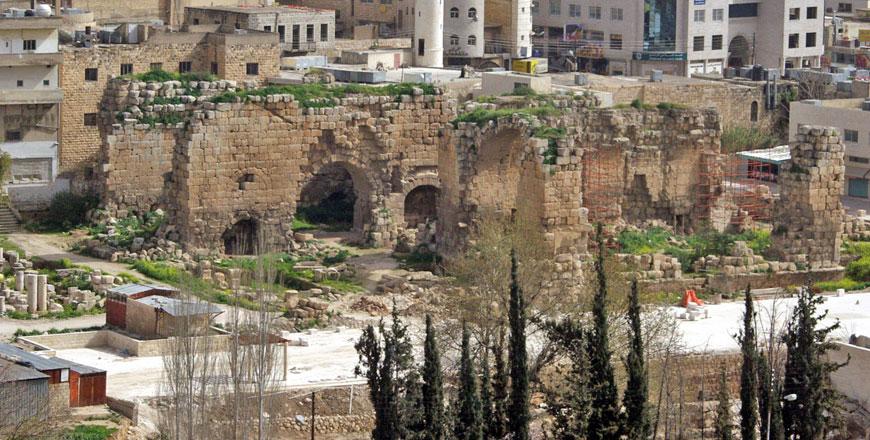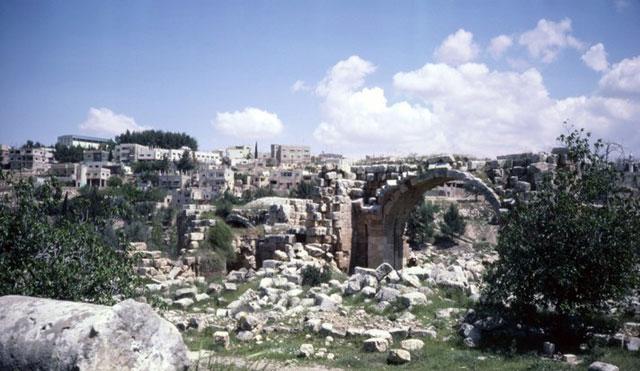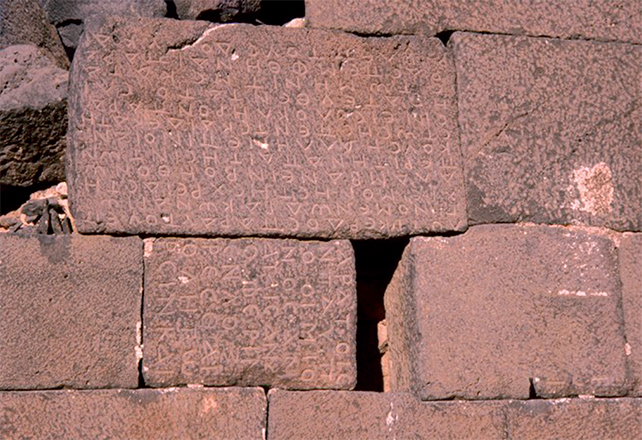You are here
‘Great Jerash Baths bear marks of human destruction’
By Saeb Rawashdeh - Sep 10,2019 - Last updated at Sep 10,2019

The Great Eastern Baths in the centre of Jerash are a major Roman monument (Photo courtesy of Gerda-Henkel Foundation)
AMMAN — Marble statues found in 2017 probably decorated the Great Eastern Baths in Jerash, said a German scholar.
The statues were found in 2017 during an excavation campaign conducted by the Department of Antiquities, the French Archaeological Mission in Jerash and the German-Jordanian University (GJU).
Back then, German professor Thomas Weber-Karyotakis focused on the nature and arrangement of statuary decoration in Jerash (ancient Gerasa).
“We hoped that the excavated marble statues in their deposit position would allow us to connect them further with the inscribed statue bases of the neighbouring northern hall,” he said in a recent e-mail interview with The Jordan Times, noting that in the course of the 2017 campaign, 109 fragments of marble statuary of different dimensions and provenances were registered.
Some objects preserved faint traces of colours and were cleaned by soft brushing without water in order to allow further research on eventual polychrome (varied colouring) during the restoration process, the expert explained.
The statues probably are in such a bad shape as a result of destructive human activities. People intentionally smashed and accumulated sculptures on the rubble above the limestone pavement for the purpose of burning the marble down to produce lime for domestic constructions, Weber-Karyotakis explained, adding that this is why major parts from the torsos have not been found, such as the heads or body extremities.
An earthquake that happened in 749 AD may have caused further damage to the statues, but also interrupted human destruction “and preserved some larger parts of marble figures,” the scholar said.
Some of the statues may have never decorated the baths, but perhaps were brought from other areas for firing, according to Weber-Karyotakis.
“To our present knowledge, the uncovered hoard of marble statuary must be seen as a testimony for their destruction by firing,” the archaeologist said.
Despite the discouraging circumstances of their deposition, the scholar continued, the statuary findings of the 2017 campaign tremendously enriched the knowledge of the statuary landscape of Gerasa in the Decapolis.
A major fragment of a precisely dated colossal statue of Aphrodite was found. It was donated in 154 AD by a certain Demetrius to the city, and has been preserved to an extent that allows an interpretation and solid future restoration, he stressed.
“The upper body of Aphrodite came to light,” Weber-Karyotakis said, noting that it was found lying on its back preserved from the zone of the navel upwards to the base of the broken neck, but the head and both arms could not be found.
Related Articles
AMMAN — Peaceful relations between the Arab world and Europe go back to the period of antiquities, according to a German professor. Spe
JERASH — After years of meticulous work, a French archaeological team that has been excavating the eastern Roman baths in Jerash, unearthed
AMMAN — The Jordan Museum, located in a very busy area of Ras Al Ain, is home to many inscriptions from various parts of the country.



















